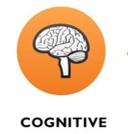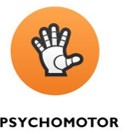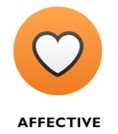ADULT AND PEDIATRIC BLSD FOR HEALTHCARE PROVIDER COURSE
![]()
EndoCAS S. Chiara Bldg 19, Via Roma 67, 56126 Pisa
The “ADULT AND PEDIATRIC BLSD FOR HEALTHCARE PROVIDER COURSE” is a Simulation-Based course. It trains participants to recognize several life-threatening emergencies promptly, and to give high-quality maneuvers to prevent anoxic brain injury. Participants can give effective chest compressions, deliver appropriate ventilations, and provide early use of an AED (Semi-Automatic External Defibrillator).
The course is structured for 15 trainees.
It includes the Cognitive, Psychomotor, and Affective domains.
Team training is performed to develop the ability to work in teams to improve skills and perfect team performance, making the best use of all competencies, both technical (knowledge and skills) and non-technical (communication, leadership).
Avaliable Simulators
- Little Anne Light 6-pack: Set of 6 manikins with Bluetooth technology, connectable to the QCPR app, which provides objective feedback to improve training quality. Ability to practice head hyperextension, jaw subluxation, and nose closure maneuvers with thumb and forefinger. Manikins are equipped with sensors to evaluate compressions (speed, depth, release) and ventilations (frequency and count)
- Choking Charlie: The Choking Charlie manikin is an adult torso designed specifically to train students to perform the Heimlich Maneuver.
- Little Baby QCPR: manikins for infant CPR training programs with real-time and summative feedback, allowing for multiple student monitoring. The mannequin can provide feedback on compression rate, depth, recoil, chest compression fraction, hand placement, and ventilation. It is equipped with audio crying feedback for choking training.
- Little Junior QCPR: manikins for CPR training with real-time and summative feedback, allowing multiple student monitoring. The manikins can provide feedback on compression rate, depth, recoil, chest compression fraction, hand placement, and ventilation. It is equipped with audio crying feedback for choking training
 Cognitive domain
Cognitive domain
Education designed to improve knowledge, comprehension, and critical thinking.
During a 60-minute frontal lesson, an expert uses PowerPoint slides to present and explain the BLS-D ILCOR (International Liaison Committee on Resuscitation) guidelines.
The lesson content includes the chain of survival, BLSD sequence, algorithm of the semiautomatic early defibrillation, and foreign body airway obstruction.
 Psychomotor domain
Psychomotor domain
Education designed to develop and refine technical skills with a focus on manual dexterity, use of instruments, and judgment related to procedural steps. This includes the components of the procedure requiring decision-making and planning.
Two hands-on skills sessions are performed to develop and refine technical skills. The following manikins by Laerdal are used:
 Affective domain
Affective domain
Education designed to conceptualize and internalize attitudes, emotions, and biases. This domain focuses on interpersonal and communication strategies, professionalism, and attitudes designed to create patient-centered and family-centered care and incorporating the principles of diversity and inclusion language. When developing curricula, care should be taken to avoid implicit bias in simulation scenarios. It may also focus on development and assessment of emotional and social intelligence.
Hands-on skills sessions allow participants to develop mutual trust and respect in teamwork.
A 60-minute team training session on adult and pediatric BLSD with simulated scenarios is delivered to induce emotional activation and thus help participants develop emotional intelligence.
PROGRAM OF THE COURSE
| Timing | Activity |
| 15 min | Presentation of the course and objectives |
| 60 min | Resuscitation science: BLS-D ILCOR guidelines. |
| 90 min | Team training on:
Ø adult and pediatric BLSD, ACR recognition (assessment of state of consciousness, respiratory activity), external chest compressions, artificial respiration Ø introduction to early defibrillation Ø airway de-construction maneuvers Ø lateral safety position |
| Pause | |
| 60 min | Team training on:
Ø adult and pediatric BLSD with simulated scenarios |
| 60 min | Partecipants assessment
Ø multiple-choice quiz Ø practical examination test |
| 15 min | Course closure, evaluation |

 Italiano
Italiano